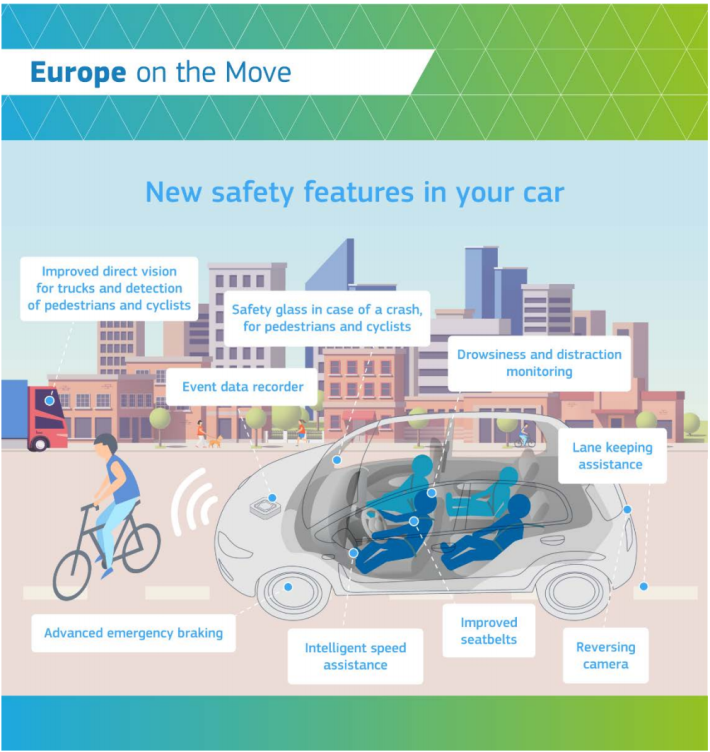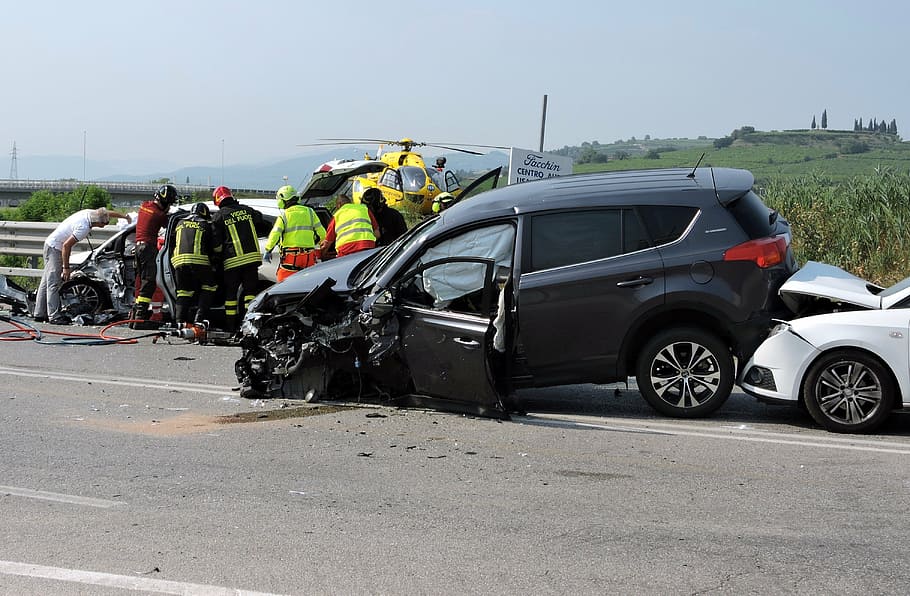Safety experts in the United Kingdom are urging their government to ban the import of American-made SUVs — because our SUV drivers have killed so many U.S. pedestrians with the assault cars.
As part of the U.K.'s Brexit transition, a Parliamentary committee is reportedly putting pressure on Prime Minister Boris Johnson to exclude U.S. automakers from import agreements if they cannot modify vehicle designs to meet European safety standards for crashes involving pedestrians, cyclists and children.
New cars in the United Kingdom are required to meet advanced vehicle safety standards that mandate pedestrian detection technology, and, eventually, speed limiters. Meanwhile, U.S. vehicle safety standards only require car manufacturers to meet minimum crash safety standards for people inside vehicles in the event of a collision — and say nothing about vulnerable road users who might be on the other end of a crash.
“We are concerned that pressure for lower safety standards will be applied in negotiations regarding the automotive sector," the Committee told the transport secretary. "U.S. vehicle safety standards are much lower than those permitted for vehicles sold in the U.K.”

It's hard to blame British safety experts for wanting to keep American assault cars off their roadways, considering SUVs' disturbing death toll in our own country. Landmark studies from the Insurance Institute for Highway Safety, the Governor's Highway Safety Association, and others have correlated a 50-percent increase in U.S. pedestrian fatalities over eight years to the rising popularity of pick-ups, vans, and sport utility vehicles. SUVs, in particular, routinely gobble up most of the market, including a stunning 70 percent of new cars sold in 2019.
But even as evidence mounts that the largest cars are among the largest killers on our roadways, there's been little effort at the federal level to require manufacturers to make them less deadly — or even to understand why, exactly, the models are so uniquely fatal to non-drivers, even when controlling for other traffic safety factors.
It's long been accepted wisdom among street safety advocates that the tall body design of SUVs is mostly to blame, because a big, boxy hood is more likely to strike a pedestrian at the chest, neck or even head level than a vehicle with a lower front profile — meaning an SUV is more likely to damage a walker's vital organs rather than simply her break legs.

But it turns out size isn't everything.
The Insurance Institute for Highway Safety notes that while SUV height and weight is a contributor to pedestrian fatality rates, the idea that it's the most important factor is largely based on crash data collected in the 1970s, '80s and '90s, when most SUVs tended to be built with a flat, square front like a Hummer. These days, most SUV designers have borrowed design elements from the sedan, including a slight slope to the hood and a bumper that's lower to the ground.
That change, the report notes, made SUVs safer in the event of a crash — but only for the people inside it. In the event of a two-car collision with a smaller car, a lower bumper on an SUV makes it more likely to collide bumper-to-bumper rather than bumper-to-hood, which improves safety ratings for drivers and passengers in both vehicles. But in the event of a car-to-pedestrian collision, walkers now tend to get struck in the legs by an ultra-low bumper and then immediately get struck again in the chest by an ultra-tall hood — which is often a little curvier than the SUVs of yore, but not curvy enough to lessen the impact on the vital organs very much.
"The changes made to improve compatibility with cars wouldn’t be expected to improve outcomes for pedestrians," the report notes. "In pedestrian crashes, the location of the force-absorbing structures is less important than the overall shape of the front end."
And recent design trends haven't just failed to make American SUVs safer. They've also made other cars more dangerous.
"If you look back 20 years ago, SUVs were all very boxy, front end vehicles, like Jeeps," said Becky Mueller, a senior research engineer for the Institute and one of the authors of the report. "In more recent years, styling trends have driven more of these sweeping designs, with curved front ends. We’ve seen lots of SUVs getting somewhat smaller — but cars are also getting somewhat larger. So the difference between a car and an SUV is collapsing."
Of course, vehicle design is far from the only ingredient that impacts pedestrian fatality rates, and Mueller is careful to note that her study isn't an indictment of SUVs so much as an indictment of SUVs when combined with high speeds. In a sample of Michigan crash data, the Institute found that neither SUVs nor smaller cars were involved in the death of any pedestrians when they were traveling at 20 miles per hour or below — though the disparities in the death toll grew the faster the vehicles travelled. At speeds of 20-39 mph, 30 percent of crashes with SUVs resulted in the death of a pedestrian, compared with just 23 percent for smaller cars. At 40 mph and higher, 100 percent of SUV drivers killed the pedestrians they struck, compared with 54 percent of all other drivers.
The United Kingdom is wise to see the link between vehicle design and efforts to reduce roadway deaths — and to keep dangerous American cars off its streets for now. And if U.S. wants to continue to compete in the global marketplace and take a step to end our own traffic violence epidemic, we'd be wise to redesign every SUV to protect all road users.






